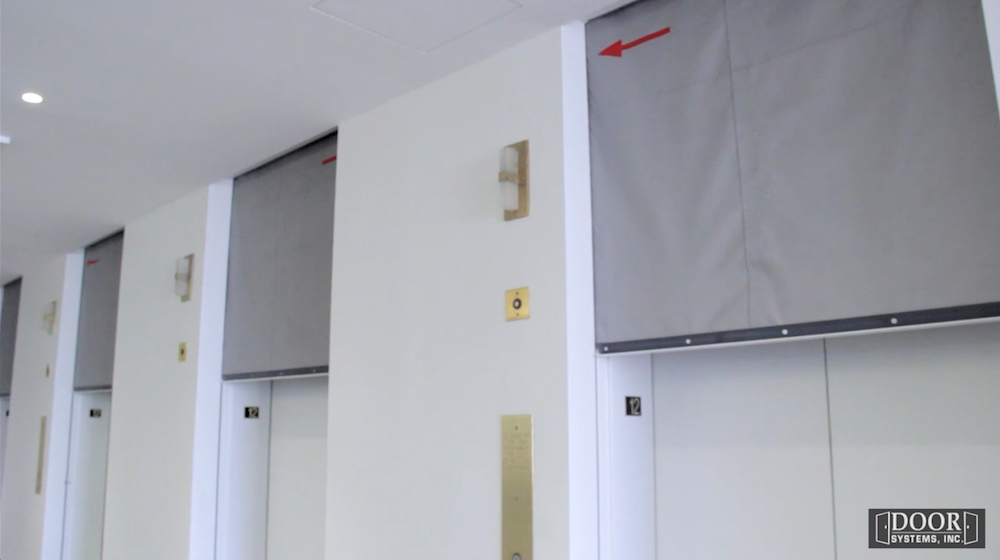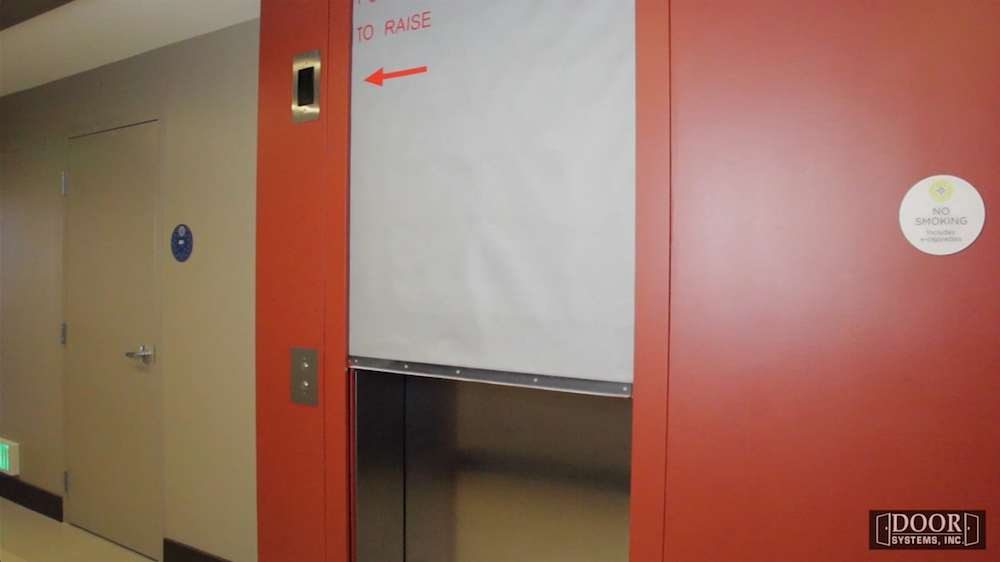In modern building design, safety and compliance with fire codes are paramount concerns. One critical aspect of fire safety that often goes under the radar is elevator smoke containment systems. These systems play a crucial role in preventing the spread of smoke through elevator shafts, which can act as chimneys during a fire, allowing smoke and toxic gases to move rapidly between floors. This article delves into why elevator smoke containment systems are essential, where they are required by code, their functions, and their importance in overall building safety.
What Are Elevator Smoke Containment Systems?
Elevator smoke containment systems are designed to prevent smoke from spreading through elevator shafts during a fire. These systems typically consist of:
- Smoke Curtains: Automated barriers that deploy to seal off elevator doors.
- Smoke Seals: Permanent or temporary seals that block smoke from entering the elevator shaft.
- Pressurization Systems: Systems that maintain a higher air pressure in elevator lobbies and shafts to keep smoke out.
These components work together to ensure that the elevator shaft does not become a conduit for smoke and fire, thereby enhancing the safety of building occupants.

Why Are Elevator Smoke Containment Systems Essential?
Preventing Smoke Spread
One of the primary functions of elevator smoke containment systems is to prevent the spread of smoke. During a fire, smoke can quickly become a deadly hazard, even more so than the flames themselves. Smoke inhalation can cause serious health issues or even death, and visibility can be drastically reduced, making evacuation difficult.
Enhancing Evacuation Routes
Elevator shafts, if not properly sealed, can compromise evacuation routes. In high-rise buildings, elevators are a critical part of the evacuation plan for people with disabilities or mobility issues. Ensuring that these routes remain smoke-free is vital for the safe evacuation of all building occupants.
Complying with Fire Codes
Building codes and fire safety regulations in many regions mandate the installation of elevator smoke containment systems. Compliance with these codes is not just a legal obligation but a moral one, ensuring that the highest standards of safety are maintained in building design and operation.
Where Are Elevator Smoke Containment Systems Required by Code?
Elevator smoke containment systems are often mandated in various types of buildings, particularly high-rise buildings, hospitals, and other structures where the safety of occupants is a top priority. The specific requirements can vary depending on the jurisdiction, but common codes and standards include:
International Building Code (IBC)
The IBC, adopted in many parts of the United States and internationally, requires that elevator lobbies in high-rise buildings be protected from smoke and fire. This often includes the installation of smoke containment systems to prevent smoke from spreading through the elevator shaft.
National Fire Protection Association (NFPA)
NFPA 101, the Life Safety Code, and NFPA 105, the Standard for Smoke Door Assemblies and Other Opening Protectives, provide guidelines for the installation and maintenance of smoke containment systems. These codes are widely adopted and enforced to ensure the safety of building occupants.
Local Building Codes
In addition to international and national codes, local building codes may have specific requirements for elevator smoke containment systems. These local regulations often build on the standards set by the IBC and NFPA, adding additional layers of safety based on regional needs and conditions.
Functions of Elevator Smoke Containment Systems
Elevator smoke containment systems are multifaceted and designed to address several key safety concerns during a fire. Here are the primary functions these systems serve:
Sealing Elevator Doors
Smoke curtains or seals are deployed to cover the elevator doors, preventing smoke from entering the shaft. These barriers are typically made of fire-resistant materials and are automatically activated when smoke is detected.
Pressurizing Elevator Shafts
Pressurization systems maintain a higher air pressure in the elevator shaft compared to adjacent areas. This positive pressure prevents smoke from infiltrating the shaft, ensuring that it remains clear for safe evacuation.
Directing Smoke Away from Evacuation Routes
By containing smoke within specific areas and preventing it from spreading through the elevator shaft, these systems help keep evacuation routes clear. This is particularly important in high-rise buildings where stairwells and elevators are critical for safe egress.
Enhancing Firefighter Operations
Elevator smoke containment systems also facilitate the work of firefighters. By preventing smoke from spreading, these systems provide clearer visibility and safer conditions for firefighting operations, allowing firefighters to access upper floors more safely.
Importance of Elevator Smoke Containment Systems
The importance of elevator smoke containment systems cannot be overstated. Here are some reasons why these systems are crucial for building safety:
Protecting Occupants
The primary goal of any fire safety system is to protect building occupants. Elevator smoke containment systems prevent smoke from spreading, reducing the risk of smoke inhalation and ensuring that evacuation routes remain clear and accessible.
Preserving Property
Smoke can cause significant damage to property, in addition to the harm caused by flames. By containing smoke, these systems help limit the damage to the building and its contents, potentially reducing repair costs and downtime after a fire.
Ensuring Code Compliance
Compliance with building codes and fire safety regulations is a legal requirement for building owners and operators. Elevator smoke containment systems are often mandated by these codes, ensuring that buildings meet the highest safety standards.
Supporting Firefighting Efforts
Firefighters rely on clear visibility and safe conditions to effectively combat fires. By preventing the spread of smoke, elevator smoke containment systems support firefighting efforts, allowing firefighters to navigate the building more safely and efficiently.

Examples of Elevator Smoke Containment Systems
To understand how elevator smoke containment systems work in practice, let’s look at some real-world examples:
Smoke Guard
Smoke Guard offers a range of elevator smoke containment solutions, including smoke curtains that deploy to seal off elevator doors. These systems are designed to integrate seamlessly with building aesthetics while providing robust smoke protection.
Key Features:
- Automated deployment
- Fire-resistant materials
- Customizable designs to match building interiors
Smoke Control
Smoke Control provides pressurization systems that maintain positive pressure in elevator shafts and lobbies. These systems ensure that smoke does not infiltrate the elevator shaft, keeping it clear for safe evacuation and firefighter access.
Key Features:
- High-performance pressurization
- Integrated monitoring and control systems
- Compatible with various building designs
McKEON Door Company
McKEON offers a variety of smoke containment solutions, including smoke doors and barriers that can be installed in elevator lobbies. These systems provide an additional layer of protection by physically blocking smoke from entering the elevator shaft.
Key Features:
- Manual and automated options
- Fire-rated materials
- Customizable to fit building requirements
Conclusion
Elevator smoke containment systems are an essential component of modern building design and fire safety. By preventing the spread of smoke through elevator shafts, these systems protect building occupants, preserve property, and support firefighting efforts. Compliance with building codes and fire safety regulations ensures that these systems are installed and maintained to the highest standards, providing peace of mind for building owners and operators.
For buildings of all types, particularly high-rise structures and those with vulnerable populations, investing in elevator smoke containment systems is a critical step toward ensuring safety and resilience in the face of fire emergencies.
If you want to learn more about advanced building safety solutions, including elevator smoke containment systems, visit GSParcel.com for in-depth insights and expert advice. Our comprehensive resources and innovative products can help you enhance the safety and functionality of your property.